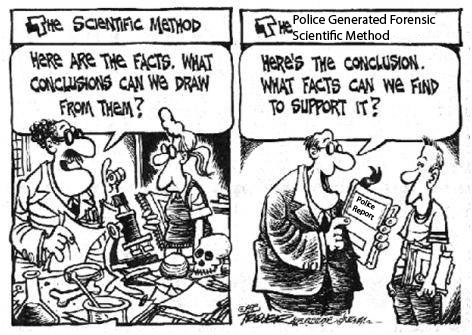Perhaps the best place to start at the beginning. Let’s start with some basic definitions of terms.
The must basic place to start is a discussion of the scientific method. Not so obvious to some, but it is a method. It is the best method known to man to logically seek to prove or disprove an idea.

If it is done correctly, it can result in as near to certainty as we can ever come to the truthfulness of a conclusion. The goal of the scientific method is to get results that accurately represent the physical processes taking place in the phenomenon.
To that end, it emphasizes a number of traits to insure that the results it gets are valid to the natural world:
- objective – the scientific method intends to remove personal and cultural biases by focusing on objective testing procedures.
- consistent – the laws of reasoning should be used to make hypotheses that are consistent with broader, currently known scientific laws
- observable – the hypothesis presented should allow for experiments with observable and measurable results.
- pertinent – all steps of the process should be focused on describing and explaining observed phenomena.
- parsimonious – only a limited number of assumptions and hypothetical entities should be proposed in a given theory [as stated in Occam’s Razor].
- falsifiable – the hypothesis should be something which can be proven incorrect by observable data within the experiment, or else the experiment is not useful in supporting the hypothesis. (This aspect was most prominently illuminated by the philosopher of science Karl Popper.)
- reproducible – the test should be able to be reproduced by other observers with trials that extend indefinitely into the future.
With goals above described, the method itself has about 5 basic steps.
- Ask a question – determine a natural phenomenon (or group of phenomena) that you are curious about and would like to explain or learn more about, then ask a specific question to focus your inquiry.
- Research the topic – this step involves learning as much about the phenomenon as you can, including by studying the previous studies of others in the area.
- Formulate a hypothesis – using the knowledge you have gained, formulate a hypothesis about a cause or effect of the phenomenon, or the relationship of the phenomenon to some other phenomenon. This hypothesis must be observable phenomenon. THIS HYPOTHESIS MUST NOT BE THE IMPACT OF THE RESEARCH, BUT RATHER THE PHENOMENON ITSELF.
- Test the hypothesis – plan and carry out a procedure for testing the hypothesis (an experiment) by gathering data.
- Analyze the data – use proper mathematical analysis to see if the results of the experiment support or refute the hypothesis. Come to a conclusion.



PiterJankovich says:
My name is Piter Jankovich. oOnly want to tell, that your blog is really cool
And want to ask you: is this blog your hobby?
P.S. Sorry for my bad english
Justin J. McShane says:
It is strictly a hobby. I do it because the need is out there to examine forensic science to promote the good and expose the bad. It is hoped that this small blog will help in some way encourage the change to get back to the emphasis of the second word—that is science—in the phrase forensic science. Thanks for reading.
Hector Contreras says:
I´m a Criminalistic in Guatemala city.
Romona Karol says:
I like what you guys are up too. Such intelligent work and reporting! Carry on the excellent works guys I have incorporated you guys to my blogroll. I think it will improve the value of my site 🙂
Kirby Fedorchak says:
Some of the best information about the topic
Adelpha Cairns says:
Thank you for what you might have. This is the very best article I’ve study